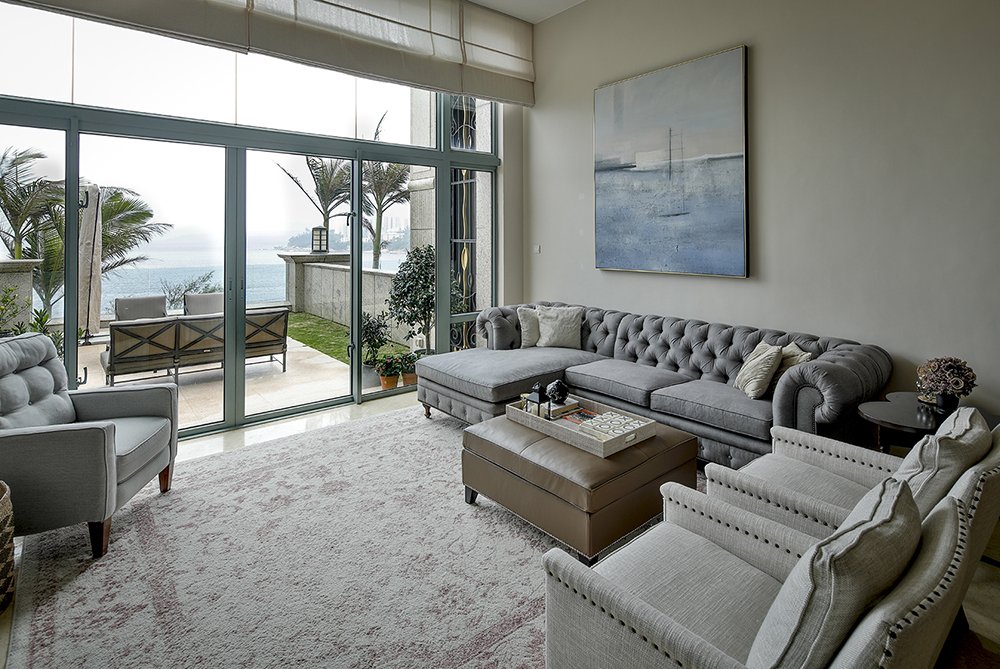How Much Will My Project Cost? How Interior Designers Price Their Services
Historically there has been a lot of mystery around how interior designers charge their fees. Designers haven’t always been forthcoming with their pricing, and this has resulted in people feeling unsure about their ability to hire a designer and some even becoming distrustful of the industry as a whole.
At my own firm, B Squared Design, I never want a client (or potential client) to be caught off-guard by a bill, or not understand an invoice, so I am always transparent and up-front with the way we charge (currently flat fee+percentage over costs). But what do those terms mean? And what are some of the other methods designers use to charge clients? I will describe the most common ways to you below. This will help you to make an informed decision when hiring an interior designer, and not feel like you’re in the dark!
HOURLY
Using this method, the designer keeps detailed records of every minute that is used on the client’s project. At the end of each month, the client is billed as per the number of hours expended. Pros: It is very clear how much time is being spent on a project. The client gets monthly statements itemizing the hours devoted to the job, and it’s easy to determine where the focus has been. Cons: There is no cap on time, and it can be difficult for the client to budget how much the entire project will end up costing.
FLAT FEE
Increasingly, more designers are using the flat fee model, rather than the traditional hourly one. In this case the fee is determined based on the size, complexity, and time-frame of the project. A retainer is often required to reserve the client’s spot in the designer’s work queue, with this amount ranging anywhere from 5-40% of the entire fee. Pros: There is only one price to the client for the entirety of the design work, so no additional fees show up unannounced at the end of the month. This simplifies the design budget calculation. Cons: Time spent on a project by the designer is not as easy to ascertain, as each hour is not individually categorized and billed.
PERCENTAGE OVER COST
This method is typically used for residential projects, though it may be used for commercial projects as well. Some designers disclose their practice of using it, others do not. The concept is as follows: the general public pays retail prices at furniture shops; however, designers are often offered discounted or wholesale prices by merchants and vendors. Then the latter applies a percentage markup to the net cost, and this number is what is invoiced to the client. The percentage is determined by the designer. Pros: If the designer chooses to share the discount it can result in a significant cost-savings to the client. Cons: If the designer chooses not to relay that he/she is using this practice, the client may not understand why items are priced the way they are. The discount given the interior designer by the retailer is always between the designer and the merchant; invoices are the property of the designer and never given to the client. There is no one standard; the markup can be anywhere from 5-100%.
PER SQUARE METER/FOOT
This way of charging is very straight-forward; the designer simply measures the space to be upgraded, determines the total footprint, and then multiplies this number by a dollar amount. The typical price/sq ft or meter varies by location, so for instance this number will be higher in New York City vs. Boise, Idaho. Pros: It is easy to determine what your flat will cost to design because you can measure it yourself and calculate. Cons: If you have an extremely large home, design work can be quite costly using this method.
COMBINATION RATES
Increasingly, more and more design firms have been moving away from using just one method of charging the client, and toward using two (or more) types depending on the project phase. The reason for this change, is that in reality a design project entails much more than simply design. It also requires that the firm handle ALL sourcing, orders, scheduling, site-visits, installation, and after-sales service. Both portions of work require a significant number of hours to find the right product, size, color and price for the client’s budget. In order to achieve the client’s vision, the designer may need to look outside of HK, custom make pieces, or take time to ask for quotations from several different vendors. If an issue arises with a supplier and there is a mistake on their end (i.e. their responsibility), the Designer will endeavor to find a solution that will satisfy all parties involved.
So because of these two distinct phases designers (myself included) often choose to use a percentage above cost for the furniture, and then an hourly or flat fee for the design work portion. Pros: Designers and clients can both feel comfortable knowing that they are being properly compensated, making for a mutually beneficial relationship. Cons: Two or more methods of pricing for one project can get complicated for some clients to keep track of in their own personal accounting.
Whichever way a designer chooses to charge a client, it is imperative that he/she explains the selected arrangement to the client so that there is no confusion. If your designer is not clear on pricing, make sure that you ask! Now that you know the most common methods, you are better equipped to have an informed discussion with your current or potential future designer.
If you have any more questions about pricing, or design in general, schedule a call or email me at info@bsquareddesignhk.com. I would be happy to help!








